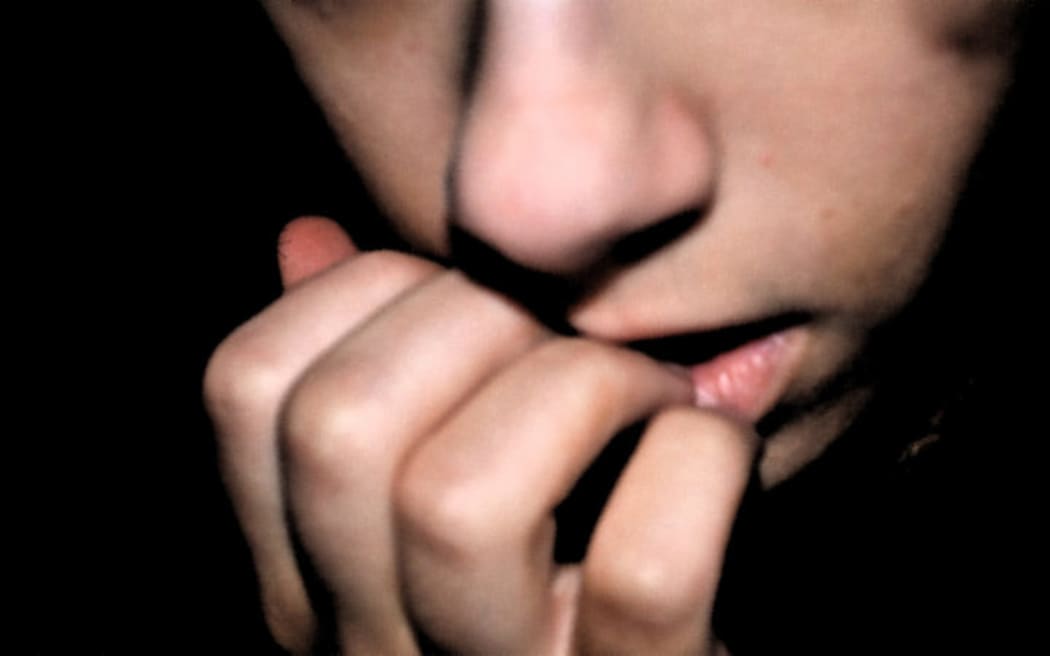What goes on in the anxious mind? There's been a lot of talk lately about young people feeling overwhelmed, anxious and confused.
So, what's the best way of getting these feelings under control? Gwendoline Smith, a clinical psychologist and mental health expert, is especially well versed on dealing with youth anxiety. Her latest book on the topic is called The Book of Knowing.

Photo: Supplied
She also works closely with the University of Auckland's Faculty of Education to provide guidance to school counsellors and speaks regularly to schools, teachers and counsellors about youth anxiety.
She chatted with Kathryn Ryan about how to recognise the signs and address anxiety before it takes over.
Smith says that cognitive theory is, on the surface, very simple but has a depth that is “quite phenomenal” and is still applicable in the modern era after being developed by Aaron Beck in the 1960s.
Social media and the internet have their role to play in youth anxiety, but she says it’s reductionist to try to pin it on one thing.
“There’s so many cultural phenomena that contribute to this and obviously people are talking about it more, more people are presenting, so the figures go up,” she says.
However, social phobia – which is now recognised as the third largest mental health problem in the first world – is certainly exacerbated by things like Facebook, Instagram and Snapchat.
Smith says social phobia kicks in during late puberty around the mid-teenage years “when the importance of the peer group is paramount.”
“It’s not a phobia of socialising, although that comes into it, the essence of the phobia is the fear of being negatively evaluated. That’s the core of the phobia, fear of being judged. And that’s when you really see social media coming into its own because, if they’re on Facebook, they’re constantly comparing themselves with the A-team – who was at that party, who looks really happy, who’s got the wonderful life, I haven’t, I’m a loser – but then, when they come off social media because they’re anxious and putting themselves down all the time, then they feel like a loser because they’re not on it.”
She says one of the first ways to treat teens affected by anxiety is to demystify it and talk about the different responses the body goes through in an anxious state, for instance the fight or flight reflex.
“People say ‘I can’t think, my mind goes blank’. Well, it does go blank because the oxygen that allows the brain to think rationally goes to the extremities to prepare the organism for fight or flight. So, the first part of the work I do is to say, here’s the science – we’d be hopeless without the survival mechanism, it’s really important, it keeps us alive.”
Then she introduces them to the trigger thinking. She gives the example of a teen who’s concerned about her jeans not being a from a good fashion label. They might skip a party or wear something else because they fear being judged. Alternatively, they might decide they don’t care and like the jeans anyway and will wear them to the party. However, if they wear the jeans to the party, they might feel as though everyone is looking at them and judging them for their decision. It’s called ‘mind-reading’ in cognitive behavioural therapy.
Smith says she will press the patient on how they knew people were judging their jeans and normally they’ll say they don’t know but they felt it. But feeling isn’t an accurate gauge of reality.
“They see someone look in their direction and suddenly it's ‘they think I’m this, they think, they think, they think,’ and this is Freud – bless his cottons – this is Freud’s projection. They project their negative thoughts about themselves through the eyes of other people and therefore become phobic of other people’s eyes.”
Another sign to recognise in anxiety is catastrophising.
Smith has an exercise she does at schools where she’ll have a continuum from 0-100 and ask students where they would place the feeling of not being invited to a party. She says students tell her they would ‘want to die’ and will place the feeling at around 96-98.
Then “and it’s a mean trick, but I don’t care” she’ll ask them to visualise leaving the room and getting a text from their sibling saying their parents had been in a head-on crash with a truck and were in intensive care. When she asks the students to rate that on the continuum, they’ll say 150. When she reminds them that 100 is the limit, they’ll say 100. When she tells them that their parents are still alive, they’ll say 99.
Drawing this on a whiteboard, she shows them that they’ve rated not being invited to a party at just below the discomfort level of finding out their parents are in intensive care. When she gives them a second chance to rate not being invited to a party, most students will place it at around 20 on the continuum. This, she says, is a process of de-catastrophising situations and putting anxiety inducing scenarios into perspective.
Smith says she teens really react to this kind of treatment and benefit from things like flashcards with messages like “feelings are not facts,” and “discomfort won’t kill you, just breathe and ride it through”.
“The thing I just love most about working with this age group is that you see them change and it’s just so rewarding. It’s harder for us older people,” she says.

